Gardening tools are an important weapon in a gardener’s arsenal. Imagine trying to dig without a shovel or rake without, well, a rake. It wouldn’t be easy. So why use garden tools that are rusted, have lost their edge, and are warped? It doesn’t make sense.
Types Of Gardening Tools
Gardening is a rewarding and fulfilling hobby requiring the right tools. Essential equipment includes shovels, trowels, rakes, hoes, pruning shears, wheelbarrows, and more. Each piece of gardening gear has its own purpose to ensure successful planting, weeding, and maintenance of your garden.
Shovels are essential for digging soil; they come in square or pointed ends for various tasks such as moving heavy dirt, breaking up hard soils, or replanting shrubs.
Trowels have narrow blades that help break apart compacted soil while allowing precision work when transferring seedlings from one container to another.
Rakes make it easy to level off beds before sowing seeds, preparing patches for new plants, and clearing debris from lawns.
Hoes are useful for removing weeds with their long handles providing reach into tight corners of flower beds too. Pruning shears let you shape bushes neatly by snipping away dead branches easily without damaging other parts of the plant.
Wheelbarrows offer portability when transporting compost bags between locations or hauling large amounts of soil through garden scapes.
With the right knowledge and skillset combined with these basic tools, any gardener can create beautiful landscapes – no matter how difficult the terrain may be!
Now that you have the tools, you need to keep them in working condition. Put them away after usage. For tools with an edge, like trowels and hand shovels, plunge them in a bucket of builder’s sand with motor oil added to it. The sand keeps the tool sharp, and the oil prevents rust.
Shovels And Spades
Shovels and spades are essential for every gardener. Spades are used to break through tough, compact soil, while shovels come in handy when you need to move dirt or scoop out deep holes. Both tools have a long handles with sharp edges at the bottom, making them perfect for digging straight into the ground.
When using either tool, it’s important to make sure the blade is kept clean and sharpened regularly so that it can be used efficiently. Also, always remember to wear gloves as both spades and shovels can cause blisters on your hands if not handled properly.
To get maximum efficiency from these tools, use your whole body weight as leverage by pushing down on the handle with one hand and pulling up with the other – this will give you more power than just relying on arm strength alone! With practice comes mastery; soon enough you’ll be able to dig trenches quickly and easily.
Rakes And Hoes
Rakes and hoes are essential tools in any gardener’s arsenal. They’re great for preparing the soil, managing weeds, leveling mulch, and composting. Here are some of the basics:
- Rakes – Rakes come in a variety of shapes and sizes to suit many tasks. Whether you’re looking for something to remove debris or spread material like gravel evenly over your garden scape, there’s one right for you!
- Hoes – Hoes provide more control than rakes when it comes to digging small trenches or shaping beds. Choose from traditional forged steel models designed specifically for gardening or lighter-weight styles that can easily be maneuvered around tight spaces.
- Garden Spades – Garden spades make quick work out of breaking up hard-packed soil and scooping out stones or other large items. Their durability ensures years of use with minimal maintenance required.
- Edging Tools – Edging tools help define garden borders by cutting into the ground along straight lines or curves as needed. This is ideal for creating neat pathways through lawns, flowerbeds, and vegetable patches alike.
- Trowel: A small scooped-shaped tool used for digging up the dirt and setting in small plants.
Wire Garden Fork: Another optional tool but very useful for breaking up clods of soil, and Garden Gloves are almost necessary when working in a garden.
- Soil Rakes – an ideal tool for leveling soil and removing small pebbles and stones.
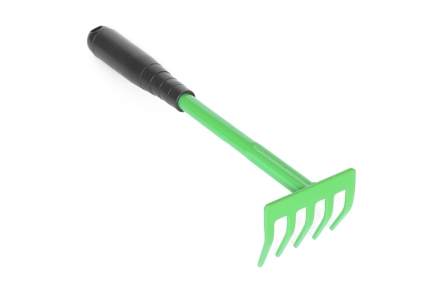
- Cape Cod Weeder – This tool has a knife-like blade for slicing weeds and loosening hard soil. Use the pointed tip to work in tight areas and remove grass and weeds from cracks in sidewalks, patios, and driveways—Weeding Knife is an optional tool but excellent for uprooting dandelions.
In addition to these basic garden tools, don’t forget about their accessories such as wheelbarrows, shovel handles, and tool heads which will extend their life and improve productivity while doing outdoor projects. The key is finding pieces that fit comfortably within your budget while still providing quality performance year after year.
Pruners, Shears, And Saws
Using the right tools makes all the difference when it comes to gardening. Pruners, shears, and saws are essential for a gardener’s toolbox as they help you maintain your plants and trees in top shape. According to research conducted by the National Home Gardening Club, nearly 90% of gardeners use pruners or shears at least once each growing season.
Pruners come with two blades and an adjustable handle that helps maximize cutting power. They can easily cut branches up to 1/2 inch thick; however, larger branches should be cut using lopping shears since these have much longer handles which give more leverage while cutting. For example, bypass pruners offer precise cuts on small twigs whereas ratchet-type pruners are able to tackle thicker woody stems without having to apply too much pressure.
If you need to make large cuts like those found in tree limbs then a bow saw will be your best bet. Bow saws usually feature sharp teeth that can quickly slice through tough material with ease. It is important to note that although these types of saws may seem intimidating due to their size, they are actually quite safe if used correctly and with proper caution.
Wheelbarrows And Carts
Wheelbarrows and Carts are an essential part of any gardener’s tool arsenal. Whether you’re hauling soil, fertilizer, mulch, or plant material, having the right wheelbarrow or cart will make your job easier. Here is a list of must-haves for a successful garden:
- A strong and durable wheelbarrow with good quality wheels to handle heavy loads.
- A folding utility wagon that can be used for indoor and outdoor tasks.
- A rugged garden cart with large pneumatic tires that won’t sink in soft ground.
- An adjustable hand truck to carry larger items such as bags of soil or straw bales.
No matter which type of vehicle you choose, it should have enough capacity to meet your needs without being too bulky to maneuver around tight spaces in your yard or garden beds. The handles should also provide a comfortable grip while pushing or pulling the load over rough terrain. Make sure you check out all the features before making a purchase so you get the best value for your money!
Watering Gear
Moving on from wheelbarrows and carts, let’s take a look at the essential gear for watering your garden. Quality and efficiency are paramount here; no gardener wants to waste their precious time standing around waiting for hoses to fill up or water tanks to drain. So, when it comes to water supplies, think of long-term investment.
A good hose is an absolute must-have in any garden setup; one that’s kink-resistant and won’t split under pressure. If you can afford it, splurge on a heavy-duty option with reinforced walls and brass fittings – these tend to last way longer than cheaper options. Hose reels also come highly recommended – they make storing away your hose much more manageable as well as preventing tangles.
When it comes to irrigation systems, there are plenty of solutions available depending on the size of your garden; anything from basic popup sprinklers all the way through to sophisticated drip line networks. Whichever route you choose, give yourself plenty of time to research before investing in any system – even if you fancy yourself as somewhat of an amateur installer!
These days anyone serious about maintaining their gardens has access to great tools and technologies that make watering effortless but still effective. With proper selection and maintenance, these pieces of equipment will ensure you get maximum satisfaction out of gardening without having to stand around watching every drop fall into place.
Garden Hand Tools
Gardening is a labor of love, and having the right tools for the job makes it much more enjoyable. The first set of basic garden hand tools you should have on hand are pruners, loppers, shears, hoes, and rakes. Pruners let you trim branches cleanly and accurately. Loppers can handle larger branches than pruners, while shears help to cut grasses and other soft vegetation in tight places where bigger tools won’t fit. Hoes come in many shapes and sizes but all serve to chop weeds or break up hard soil clumps. Rakes make it easy to spread mulch evenly or gather leaves without bending over too much.
Next on your list of essential garden hand tools are shovels and trowels. A good quality shovel is invaluable for digging holes for planting trees or shrubs as well as moving large amounts of material around the yard quickly. Trowels are smaller versions with pointed blades that allow you to dig small holes easily when transplanting seedlings or bulbs into your landscape beds. They also work great for scooping out compost from bags or spreading fertilizer in narrow rows between plants.
Finally, a wheelbarrow serves multiple purposes such as transporting materials like soil and gravel around the yard, hauling away weeds and trimmings after gardening sessions, mixing potting soils for containers, and even holding water buckets during watering duties! With these basics covered, there’s no limit to what kind of beautiful outdoor space you can create in your own backyard.
Weed Control Solutions
Now that soil preparation is complete, it’s time to take control of your weeds. There are a variety of weed control solutions available to help you achieve the garden of your dreams. Here are some tools and techniques to consider:
- Manual Weed Pullers – These hand-held devices allow you to quickly remove pesky weeds without damaging nearby plants or disturbing the surrounding soil.
- Pre-Emergent Herbicides – This type of herbicide works by forming an invisible barrier on top of the soil, preventing any new weed seeds from sprouting.
- Post-Emergent Herbicides – If you already have existing weeds, post-emergent herbicides can be used to target specific species for elimination.
These three strategies will ensure your garden remains free from unwanted intruders throughout the growing season! With proper application, these products can make all the difference in achieving a healthy and vibrant yard and garden space. Now let’s explore lawn care products that will give your outdoor space that extra bit of lushness!
Lawn Care Products
Lawn care is an integral part of maintaining a beautiful garden. Did you know that Americans spend $40 billion annually on lawn care products? It’s no surprise since keeping your grass healthy and green requires effort and knowledge. As an expert in the field, I’m here to provide some helpful tips for selecting the right lawn care products for your yard.
First off, determine what type of grass you have growing in your yard. Different types of grass require different levels of maintenance and will benefit from different types of fertilizer or weed killer. Knowing your grass type can help narrow down the selection when it comes time to purchase these items. You may also want to consider other environmental factors, such as soil conditions, temperature ranges, and sun exposure when choosing lawn care products.
Another important factor to keep in mind is how often you plan on doing regular maintenance tasks like mowing or raking leaves. If you only do these tasks once every couple of weeks then investing in higher-quality tools could be beneficial; however if you are more diligent about upkeep then cheaper alternatives might work just fine. Talk with local experts at hardware stores or gardening centers to get their opinion before making any purchases so you end up with exactly what you need without spending too much money.
Seed Spreaders And Spreaders
Once you have the right lawn care products to get your grass in shape, it’s time to think about seed spreaders and spreaders. These tools can help make sure that your entire yard is properly seeded or fertilized so that it looks great from season to season.
When selecting a seed spreader, consider what type of seeds you’re working with and how much area needs to be covered. Smaller hand-held models are best for small yards or spot-seeding areas. If you need coverage over a large area, then wheeled broadcast spreaders are ideal – they provide even distribution across wide swaths of land quickly and easily.
No matter which model you choose, maintenance is key to ensuring its longevity and effectiveness: remember to clean out any leftover material after use and store it away when not needed.
Garden Sprayers And Sprinklers
Garden sprayers and sprinklers are essential for keeping your plants watered. They come in a variety of shapes and sizes, so it’s important to choose the right one for you. Handheld garden sprayers are great for small gardens or patios, while larger ones can be used over large areas such as lawns. For watering delicate flowers, like roses or other blooms, look for adjustable nozzle settings and adjustable pressure controls that will help keep them hydrated without causing damage.
If you have an established flower bed with lots of mature perennials and shrubs, then investing in a quality irrigation system is well worth it. This type of automated system allows you to easily water all parts of your garden with little effort from you – perfect if you’re away from home often! The best part about this option is that there are many models available at different price points; just make sure to find one suitable for your landscape size.
Finally, don’t forget about rain barrels – not only do they conserve water but also provide additional nutrients to the soil when emptied into flower beds. A rain barrel can really help give your garden an added boost during dry spells.
Insecticides, Fungicides, Pesticides
Now that you have the right garden sprayers and sprinklers, it’s time to move on to insecticides, fungicides, and pesticides. These are important tools for any gardener who wants a thriving and beautiful outdoor space.
Insecticides work by killing or preventing the growth of insects in your garden. They can be sprayed directly onto plants to combat aphids, mealybugs, mites, and other common pests. Make sure you read all labels carefully before use so you don’t accidentally harm beneficial species like bees or butterflies.
Fungicides help keep fungal diseases from attacking your plants. They come in both liquid and powder forms, with each having its own advantages when dealing with specific types of fungi. Be sure to follow instructions as some can cause damage if used too frequently or applied incorrectly.
Finally, pesticides are generally broad-spectrum chemicals that act quickly against multiple different kinds of pests. However, they can also be harmful to humans and animals if not used properly – always wear protective gear when spraying these products.
Protective Gear For Gardeners
Gardening can be an enjoyable and rewarding experience, but it’s important to remember that safety should always come first. As any veteran gardener knows, the right protective gear is essential for keeping you safe while in your garden. From gloves to aprons and hats, there are several pieces of protective equipment every green thumb needs to have on hand.
Let’s start with gloves since they’re probably the most important piece of protective equipment a gardener can own. Not only do they protect against cuts and scrapes from sharp tools or plants, but they help keep dirt and bacteria away too. Look for sturdy leather or canvas gloves that’ll last through many seasons’ worth of work.
Next up is headgear – if you plan on spending long hours outdoors tending your garden, then having some sort of hat (or even sunshades) will make sure you don’t get too much sun exposure which could lead to skin damage over time. A brimmed hat or visor offers great protection from the elements and keeps stray branches outta your face as well. Finally, don’t forget about an apron – this trusty tool helps keep clothing clean when working around soil or debris, plus it provides another layer of protection against scratches and abrasions.
Final Thought
Gardening is a wonderful and rewarding hobby, but it can also be labor-intensive. With the right set of tools and equipment, however, gardening becomes an enjoyable pastime that yields bountiful results. Having the essential garden tools at your disposal will make gardening easier and more efficient.
Shovels, spades, hoes, pruners, shears, saws – these are just some of the basic items every gardener needs to ensure success in their efforts. Garden sprayers and sprinklers help keep plants healthy while insecticides, fungicides, and pesticides protect against damage from pests or diseases. Finally, protective gear like gloves should always be worn when working with sharp objects like pruners or rakes to prevent injury.
No serious green thumb should go without these essential garden tools. With these pieces of equipment on hand, you’ll have everything necessary for successful gardening experiences each season. So don’t hesitate: get out there and start turning your backyard into something special.

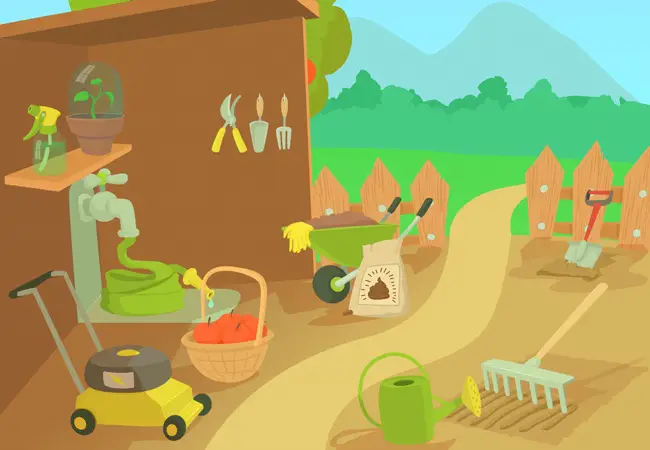
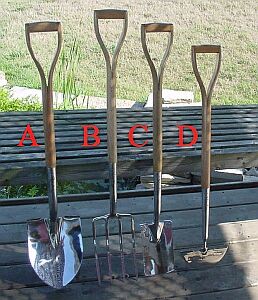
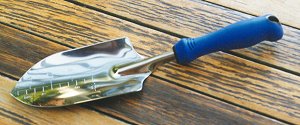
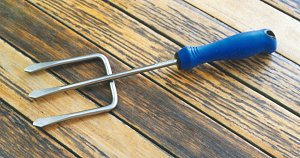

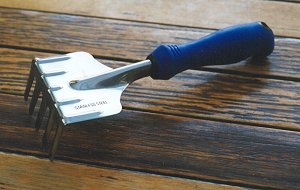
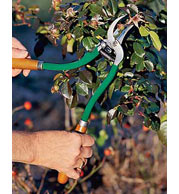
very simple writing with great insight. I want you to critique my writing in my blog. The link to the article
https://homesteadwishing.com/best-gardening-tools